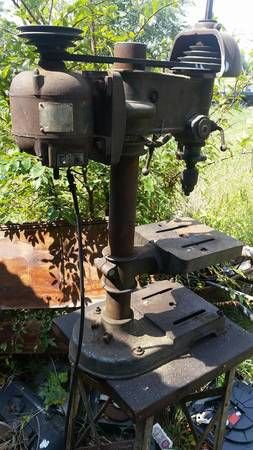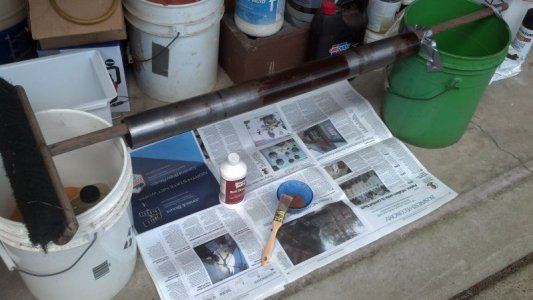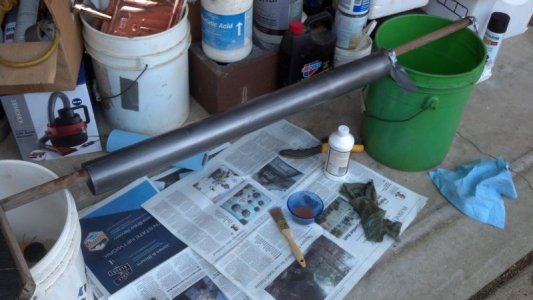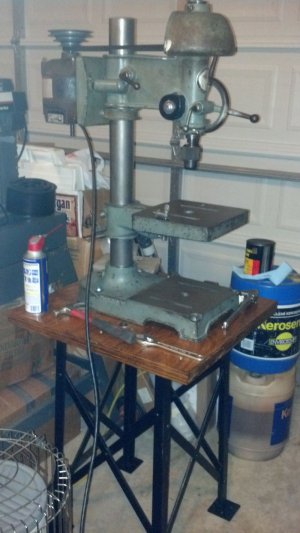-
Welcome back Guest! Did you know you can mentor other members here at H-M? If not, please check out our Relaunch of Hobby Machinist Mentoring Program!
You are using an out of date browser. It may not display this or other websites correctly.
You should upgrade or use an alternative browser.
You should upgrade or use an alternative browser.
Protecting & Maintaining Machined Surfaces
- Thread starter louosten
- Start date
- Joined
- Dec 8, 2013
- Messages
- 2,651
I usually dilute the stuff I buy locally (different brand) about 4:1 and leave the part in overnight. Heating the solution to near boiling reportedly reduces the time to about 15 minutes and produces a better finish but I haven't tried that yet. I then rinse the part carefully so as to not disturb the phosphate coating, let it air dry, apply a thin coat of linseed oil, and then hang the part in the sun for the linseed oil to set up.John,
Thanks,
Rod
I wouldn't use phosphoric acid on a precision flat surface unless it was just to strip off heavy rust before refinishing.It is remarkable how little rust it takes to ruin a precision flat surface. Best not to let it take hold. Used or handled tools do not rust as quickly. I have a forged keychain which will never rust. It will wear away first.
- Joined
- Aug 19, 2013
- Messages
- 764
I usually dilute the stuff I buy locally (different brand) about 4:1 and leave the part in overnight. Heating the solution to near boiling reportedly reduces the time to about 15 minutes and produces a better finish but I haven't tried that yet. I then rinse the part carefully so as to not disturb the phosphate coating, let it air dry, apply a thin coat of linseed oil, and then hang the part in the sun for the linseed oil to set up.
I wouldn't use phosphoric acid on a precision flat surface unless it was just to strip off heavy rust before refinishing.
That's where Evapo Rust is champion.
- Joined
- Oct 11, 2013
- Messages
- 90
EvapoRust is great for many applications, especially for small, uniform parts that fit in a bucket. It is relatively expensive in comparison with other methods, especially for non-uniform and large parts. I use Naval Jelly frequently because it is inexpensive and lends itself to mostly any size and shape that requires cleaning. Due to its jelly-like, brush on nature, you don't necessarily have to coat the entire part in question to restore an accurately machined surface.
When I acquired this drill press, it was pretty rusty:

The column was obviously a precision surface that needed to be cleaned and restored; I considered an EvapoRust bath, but couldn't locate a long, slender tub for my purposes, so I fashioned the following (cheap) set-up:

Two 5 gallon buckets, an old shop broom, and Wifey's discarded liberal newspaper to catch the drippings! After 10 cycles of soapy wash, wire brush, and Naval Jelly, I had a pretty clean column:

This obviously facilitated a smoothly operating machine:

I chose not to repaint everything just yet, but to restore the drill press to full functionality. So far, the 'Old Iron' has lived up to its deserved reputation!
When I acquired this drill press, it was pretty rusty:

The column was obviously a precision surface that needed to be cleaned and restored; I considered an EvapoRust bath, but couldn't locate a long, slender tub for my purposes, so I fashioned the following (cheap) set-up:

Two 5 gallon buckets, an old shop broom, and Wifey's discarded liberal newspaper to catch the drippings! After 10 cycles of soapy wash, wire brush, and Naval Jelly, I had a pretty clean column:

This obviously facilitated a smoothly operating machine:

I chose not to repaint everything just yet, but to restore the drill press to full functionality. So far, the 'Old Iron' has lived up to its deserved reputation!
